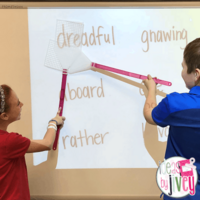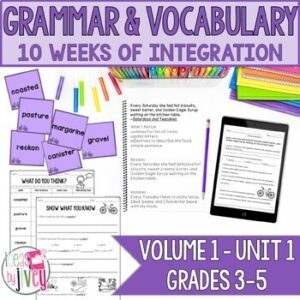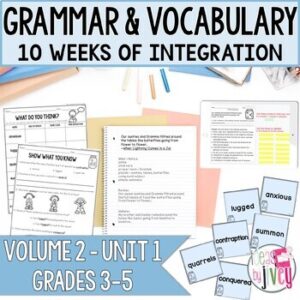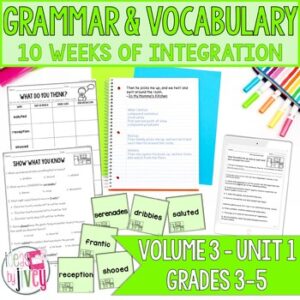Menu
Vocabulary is undeniably a cornerstone of literacy, but the approach taken in order to teach vocabulary is the key. Research-based strategies emphasize the importance of teaching vocabulary in context rather than in isolation. This allows students to make meaningful connections between words and the world around them, enriching their understanding and application of language. But in this post, I’m getting real: I made a lot of mistakes before I found success with teaching vocabulary. It took me years to figure out what DIDN’T work before I found what DID.

In my first year of teaching, I looooved visiting the teacher resource store: School Box. Flipping through workbooks, looking at all the fun borders and pretty posters…so naturally, I was drawn to a book with a pretty cover that promised mastery of twelve (or was it sixteen??) tier 2 and tier 3 words a week. Sounds great, right?
We got out the dictionaries every week, worked through the weekly packet, and the kids took a quiz on Friday. Honestly, most passed the quiz, and then… we moved on to the next week. And the kids probably remembered all the words, right? HA!! That would be a big NEGATIVE. But guess what? I used that dang book for THREE years! 🙄
Two of the most important factors in students’ reading comprehension and academic success are their vocabulary upon entering school and their capacity to learn new vocabulary. While we can’t control the initial vocabulary students bring with them when they first walk through our classroom doors, we have a significant role in shaping their capacity to learn and acquire new words.
The ability to learn new vocabulary is closely tied to the concept of “word consciousness,” an awareness and interest in words and their meanings, which can be nurtured and developed over time. By teaching vocabulary in context, we can foster this word consciousness and help students make meaningful connections between new words and the concepts they represent. In doing so, we’re not just teaching words; we’re equipping our students with the linguistic tools they need to succeed academically and beyond.
So fast forward, three years later when I finally discovered that creating a large list of disconnected and de-contextualized words and presenting them to students on Monday, then testing on Friday, is ineffective.
Exhibit A: When defining a vocabulary word that can have multiple meanings in the dictionary, how many of your students pick the first definition and write it down, then move on to the next word? Or better yet… raise your hand if you have one of *those* students who finds the SHORTEST definition of the word to write!
Research shows that effective vocabulary instruction is about integrated practices that stress conceptual knowledge of words and how words are related. In other words, we should introduce words that the students will encounter IN CONTEXT through text or discussion, and provide time and activities for them to interact with words in multiple ways. (That way, when a word DOES have multiple meanings, they learn about them all and understand when to use it!)
So, let’s talk about what works! Instead of pulling random vocabulary words out of the air (or from a workbook…), I started teaching vocabulary from my favorite mentor texts, which I was already using for reading and my mentor sentence lessons.
Some points to consider, based on research:




Are you on your own journey, working to make your vocabulary lessons more effective?
If you’re interested in implementing these best practices, come join hundreds of other teachers in the All-Access Mentor Text Membership, complete with contextual vocabulary work, of course!


